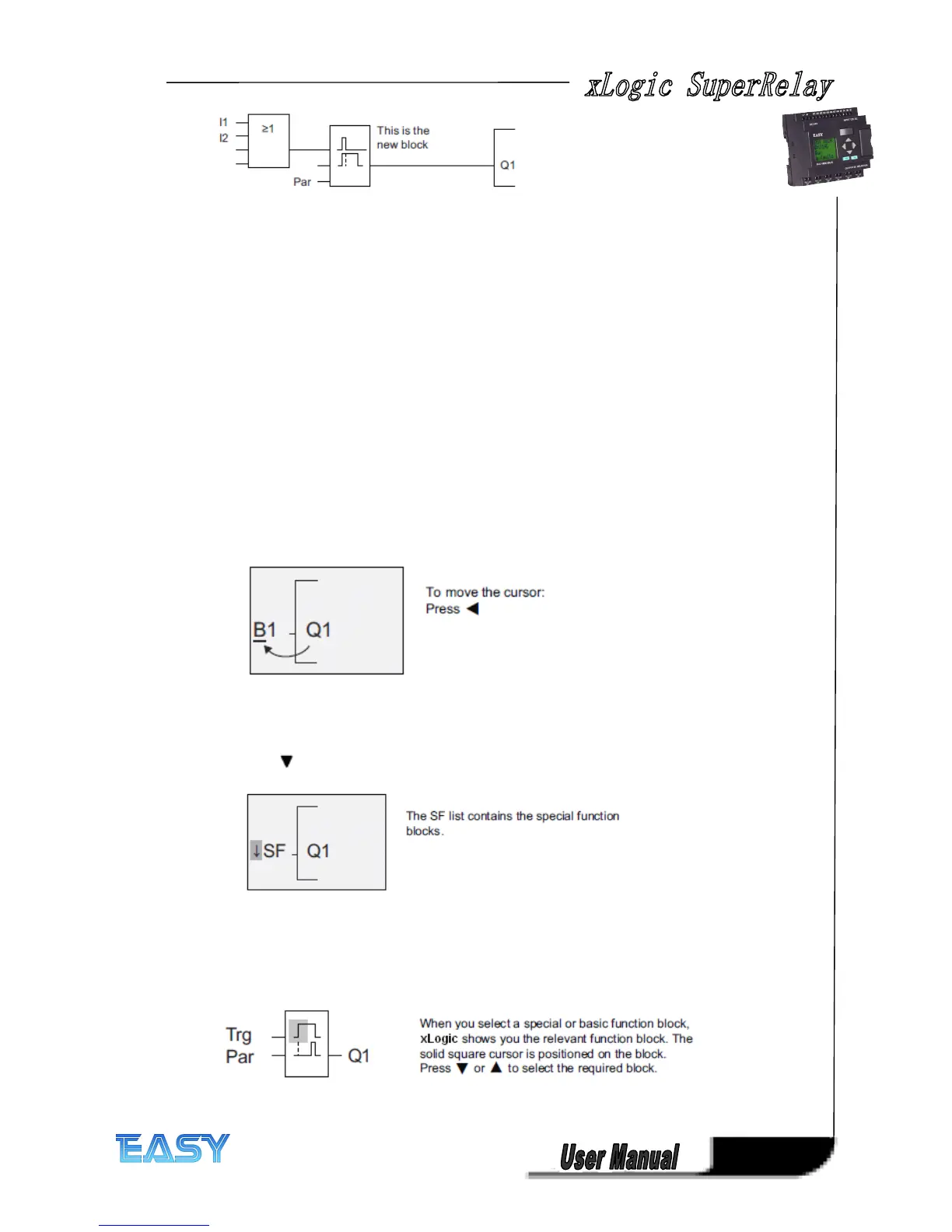47
47
47
47
You can see the OR block and the output relay Q1 we have already used in the first circuit
program. The only difference is the new off-delay block.
Editing
Editing
Editing
Editing the
the
the
the circuit
circuit
circuit
circuit program
program
program
program
Switch xLogic to programming mode.
As a reminder:
1. Switch xLogic to programming mode
(in RUN: Press ESC to enter the parameter assignment mode. Select the 'Stop' command,
confirm with OK, then move the '>' cursor to 'Yes', and once again confirm with OK). For
additional details, see the topic "The four golden rules for operating xLogic ".
2. On the main menu, select "Program"
3. On the Programming menu, select "Edit", confirm with OK. Next, select "Edit Prg" and
confirm with OK.If required, enter your password at the prompt and confirm with OK. You can
now modify the current circuit program.
Adding
Adding
Adding
Adding a
a
a
a block
block
block
block to
to
to
to a
a
a
a circuit
circuit
circuit
circuit program
program
program
program
Move the cursor to the B in B1 (B1 is the number of the OR block):
We now insert the new block at this position.
Confirm with OK.
Press to select the SF list:
Press OK.
The block of the first special function is shown:
Select your block (off-delay, see the next figure), and then press OK:
